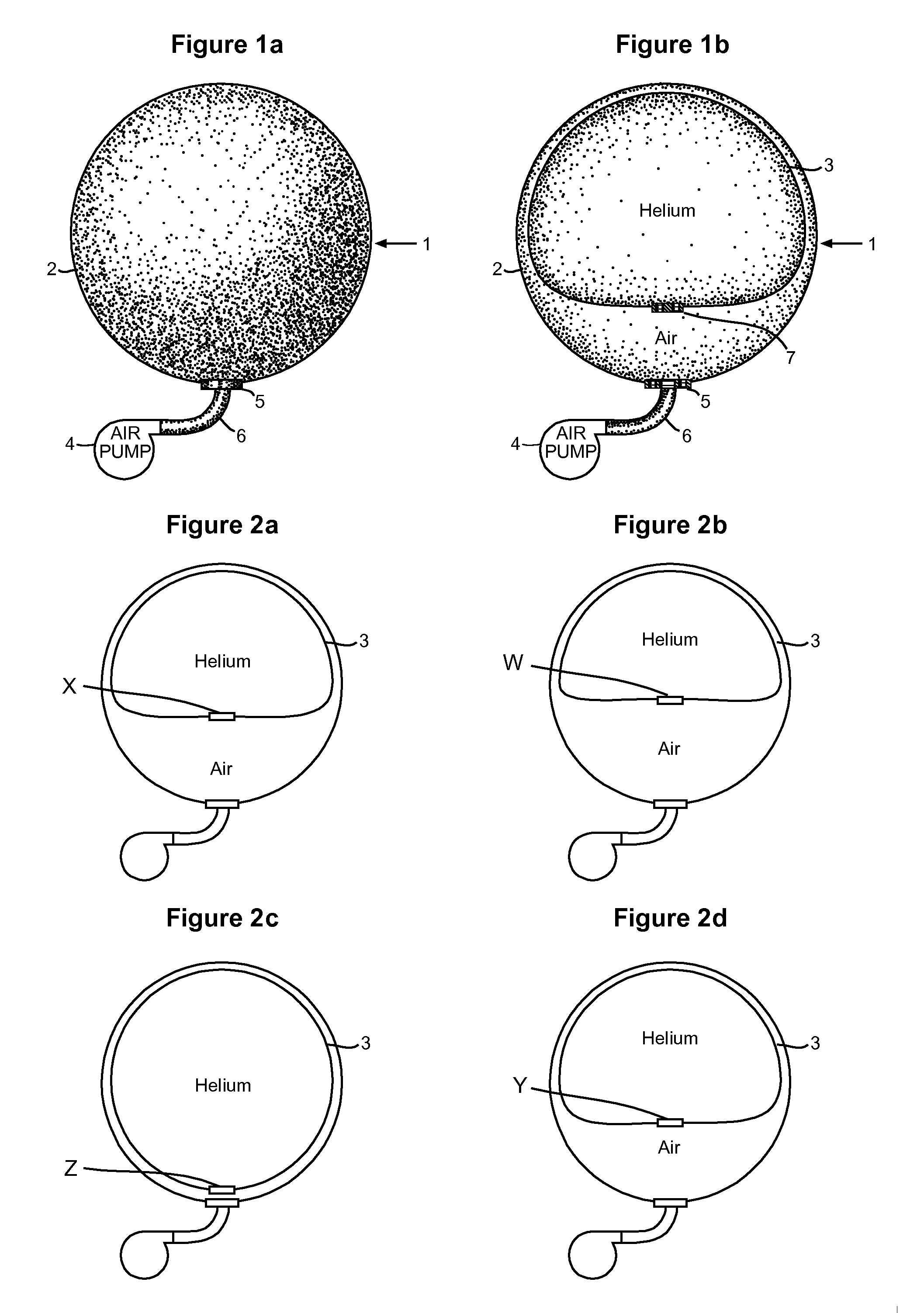Aerostatic Buoyancy Control System
a control system and buoyancy technology, applied in rigid airships, aircrafts, vehicles, etc., can solve the problems of limited heat, limited tensile strength, and affecting the lift of balloons, so as to reduce aerostatic lift, increase aerostatic lift, and high tensile strength
- Summary
- Abstract
- Description
- Claims
- Application Information
AI Technical Summary
Benefits of technology
Problems solved by technology
Method used
Image
Examples
Embodiment Construction
[0025]Referencing FIG. 1b, this invention is an aerostatic buoyancy control system 1 allowing for the active management of aerostatic lift in buoyant and semi-buoyant aerial vehicles. It utilizes an outer pressure cell 2 made of high tensile strength air-impermeable membrane of a given volume, and an inner compression cell 3 made of flexible lifting-gas-impermeable membrane and of only slightly smaller dimensions than the outer pressure cell 2.
[0026]The inner compression cell 3 is filled with a lifting gas, such as helium or hydrogen, via a gastight valve system 7 to some fractional volume of its maximum capacity at Mean Sea Level, as shown in FIG. 2a, which depicts a 75% fill, with the lower portion of the inner compression cell 3 reaching spatial equilibrium at position X. This allows for expansion of the lifting gas at different operational altitudes. The outer pressure cell 2 communicates with the outside atmosphere via a closeable and directional valve system 5. When the valve ...
PUM
 Login to View More
Login to View More Abstract
Description
Claims
Application Information
 Login to View More
Login to View More - R&D
- Intellectual Property
- Life Sciences
- Materials
- Tech Scout
- Unparalleled Data Quality
- Higher Quality Content
- 60% Fewer Hallucinations
Browse by: Latest US Patents, China's latest patents, Technical Efficacy Thesaurus, Application Domain, Technology Topic, Popular Technical Reports.
© 2025 PatSnap. All rights reserved.Legal|Privacy policy|Modern Slavery Act Transparency Statement|Sitemap|About US| Contact US: help@patsnap.com



